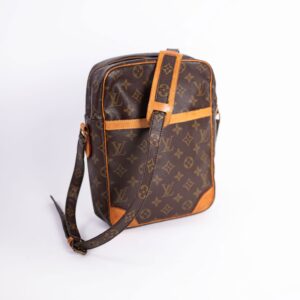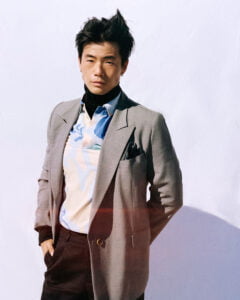Forget Fast Fashion, Shop Quirk
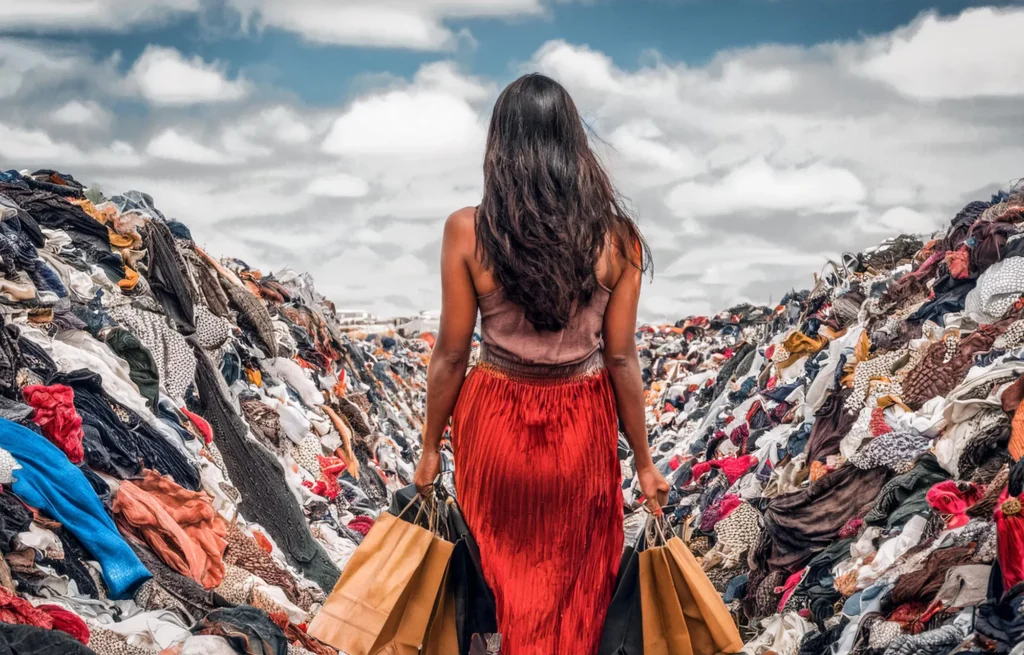
What is Fast Fashion?
Fast fashion is all about producing affordable, trendy clothing quickly. Brands aim to bring runway designs to store shelves in a flash, making it easy for us to access the latest styles without spending a fortune. However, this often compromises quality, with many items designed to last only a few wears before being discarded.
One major issue with fast fashion is its emphasis on mass production. Some brands release new collections weekly, encouraging a cycle of overconsumption where we accumulate more clothes than we truly need, often without considering the environmental impact.
Additionally, many fast fashion brands rely on low-cost labor from developing countries, where worker protections may be lacking. This can lead to exploitation and unsafe working conditions, with workers earning very low wages for long hours.
It’s worth considering our choices and exploring more sustainable fashion options. Recent statistics show that in 2023, clothing sales reached around 250 billion units annually, while the average number of wears per item has dropped by 40%, indicating a troubling trend towards disposable fashion.
By choosing second-hand clothing, we can help reduce our carbon footprint and support a more sustainable fashion industry. Being mindful of the real cost of our clothing choices—both environmental and social—is important. Second-hand shopping not only minimizes waste but also promotes a circular economy, where items are reused, recycled, or repurposed instead of ending up in landfills. This approach aligns with the goals of eco-friendly apparel and sustainable fashion, offering a more responsible way to stay stylish.
Not So Fun Fact!
This figure underscores the urgency of finding alternatives to fast fashion. By opting for second-hand clothing, we can significantly reduce our carbon footprint and contribute to a more sustainable fashion industry. It’s important to be mindful of the true cost of our clothing choices, considering both their environmental and social impacts.
Switching to second-hand shopping not only curbs waste but also supports a circular economy, where items are reused, recycled, or repurposed rather than ending up in landfills. This approach aligns with the goals of eco-friendly apparel and sustainable fashion, offering a more responsible way to stay stylish.
How to Spot Fast Fashion Brands?
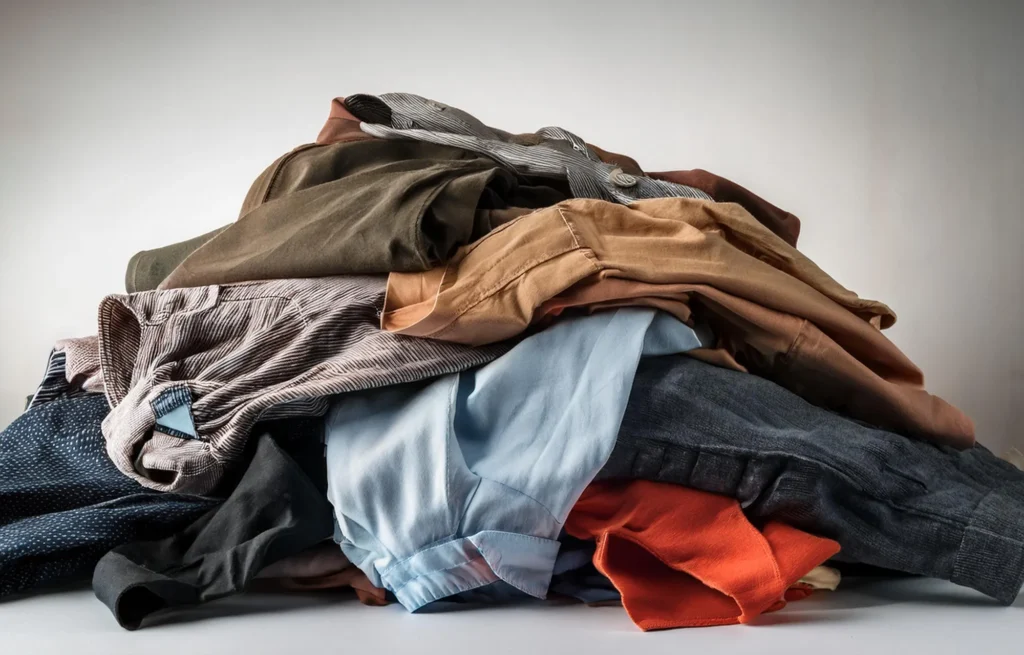
Spotting fast fashion brands can be tricky with so many retailers emerging. However, there are some clear signs to help you identify them. First, observe how quickly a brand releases new collections. If you’re seeing new styles every week, it’s likely fast fashion.
Another indicator is the price. Fast fashion items are often very cheap to attract shoppers, which usually means lower quality and ethical concerns. If a deal seems too good to be true, it might not have been made sustainably.
Finally, consider the materials. Fast fashion brands often use synthetic fabrics like polyester and acrylic, which are cheaper to produce but harmful to the environment. In contrast, natural fibers like cotton, wool, and linen tend to be more sustainable, though sourcing practices still matter.
How Is Fast Fashion Bad?
Environmental Impact - Carbon Emissions
Fast fashion significantly contributes to global carbon emissions. The production process involves energy-intensive techniques, from fabric manufacturing to transportation. These activities release large amounts of carbon dioxide into the atmosphere, exacerbating climate change. By choosing second-hand clothing, you can help reduce this carbon footprint and mitigate the effects of global warming.
Furthermore, fast fashion’s reliance on synthetic fibers like polyester exacerbates the problem. These materials break down into microplastics, polluting our oceans and entering the food chain. Transitioning to eco-friendly apparel can help decrease the demand for such harmful materials.
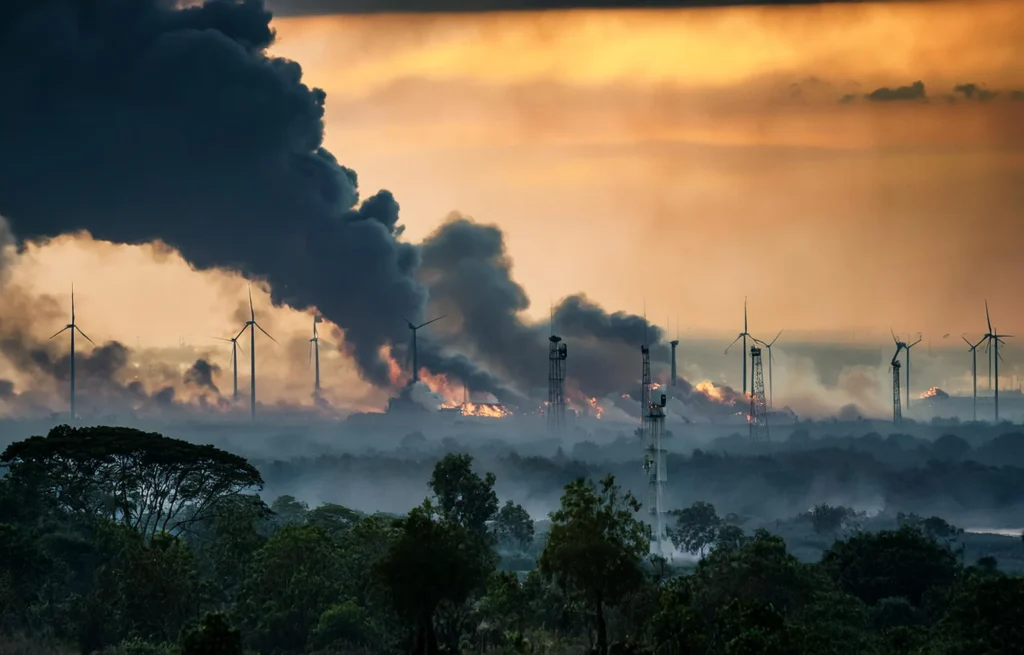
Environmental Impact - Water Usage
The fashion industry is notorious for its excessive water consumption. Producing a single cotton t-shirt requires around 2,700 liters of water, enough for one person to drink for two and a half years. Fast fashion brands often prioritize speed over sustainability, leading to irresponsible water usage.
In contrast, second-hand clothing has already undergone the production process, meaning no additional resources are needed to create new garments. Opting for pre-loved items helps conserve water, a precious resource becoming increasingly scarce due to climate change and weather catastrophes.

Environmental Impact - Water Pollution
Fast fashion’s impact on water pollution is equally concerning. Many brands use materials containing hazardous chemicals, such as lead, perfluoroalkyl (PFA), and phthalates. These substances are harmful to human health and can cause severe environmental damage when released into water systems.
Choosing second-hand clothing minimizes the need for new production, thereby reducing the release of these pollutants. By supporting sustainable fashion brands and practices, we can work towards cleaner, safer waterways for future generations.

Powering Overconsumption
Fast fashion’s business model relies on creating a constant demand for new products. Retailers often follow extremely short trend cycles, encouraging consumers to buy the latest styles as soon as they hit the market. By the time an order arrives at a customer’s door, fast fashion brands are already marketing new microtrends through social channels.
This relentless pace of consumption fuels overconsumption and waste, leading to increased environmental impacts and textile waste. Second-hand shopping offers a more sustainable alternative, allowing consumers to enjoy fashion without contributing to this cycle of excess.
Furthermore, by supporting second-hand retailers, consumers can help reduce the pressure on fast fashion brands to produce more and more. This shift in demand can encourage companies to adopt more sustainable practices, ultimately benefiting the planet.
Labor
The fast fashion industry has long been complicit in a system that exploits workers to maximize profits. Many garments are produced in sweatshops located in countries with weak labor laws and little government oversight. Workers endure poor, unhygienic, and unsafe conditions, often working 14 to 16 hours a day, seven days a week, for below-subsistence wages.
This exploitative model highlights the human cost of fast fashion. By choosing second-hand clothing, consumers can avoid supporting companies that prioritize profits over people. Additionally, supporting ethical brands that prioritize workers’ rights and fair pay is a step towards creating a more just fashion industry.
Consumers can also advocate for better labor practices by using their purchasing power to demand transparency and accountability from fashion brands. This collective voice can drive meaningful change in the industry and improve the lives of garment workers worldwide.
Returns
Fast fashion retailers churn out staggering numbers of cheap, disposable fashion items that are often returned. These returns rarely make it back into circulation because it costs more to process them than to produce new items. As a result, many returned garments end up in landfills, contributing to the growing problem of textile waste.
By choosing second-hand clothing, we can reduce the need for new production and minimize returns. This approach aligns with the principles of sustainable fashion and promotes a more responsible way to consume clothing. Encouraging a culture of mindful consumption can also help combat the throwaway mentality perpetuated by fast fashion.
Supporting second-hand shopping platforms and initiatives further strengthens the circular economy, where goods are reused, recycled, or repurposed. This model not only reduces waste but also preserves valuable resources, ultimately benefiting both the environment and society.
What Should We Do?
Sustainable Shopper Checklist
- Shop Vintage or Second-Hand: Explore unique, high-quality pieces that come with their own stories. Thrifting can be a fun adventure, and you might find some one-of-a-kind gems.
- Try Renting Clothes: For special occasions, consider renting instead of buying. It’s a stylish way to enjoy new outfits without adding to your closet.
- Pick Sustainable Brands for New Purchases: Support brands that prioritize ethical production and eco-friendly practices. Look for labels that are transparent about their supply chains.
- Be a Thoughtful Shopper: Reflect on what you’re buying and why. Consider if the clothes are versatile and durable before making a decision.
- Invest in Longevity: Choose clothes that will last beyond a single season. Quality materials and classic styles can be a smart investment.
- Join the Circular Economy: Sell or donate your old clothes on platforms like eBay or Depop, and recycle textiles with responsible recyclers to reduce waste.
- Avoid Fast Fashion: Make mindful choices by steering clear of fast fashion brands. This helps support a more sustainable fashion industry.
Conclusion
The fast fashion industry has long prioritized profit over people and the planet, resulting in harmful environmental impacts, exploitative labor practices, and overconsumption. It’s crucial for consumers to seek alternatives. That’s where QUIRK comes in—a Vintage and Modern boutique promoting curated vintage pieces that are authenticated and of exceptional quality.
Second-hand shopping, like what we offer at QUIRK, provides a sustainable solution by reducing waste and supporting a circular economy. By understanding the true cost of our clothing choices and making more responsible decisions, we can drive change within the fashion industry. Whether through vintage finds, renting, or choosing ethical brands, every action counts towards a greener, more equitable future.
For those looking to explore more about the impact of fast fashion and the benefits of second-hand shopping, especially in light of the current weather catastrophes in Spain, Florida, and Southeast Asia, consider watching “The True Cost” documentary or exploring ThredUp’s Resale Report. Together, we can make a difference in creating a more sustainable world.
Visit our boutique to find our curated vintage selection
Quirk BOUTIQUE, is located at 112 West 9th St. #200 Los Angeles, CA 90015

Melynda Choothesa, CEO
Senior Fashion Stylist, Costume Designer, Fashion Designer, Art Director
With over 15 years of expertise in still photography, commercial fashion styling, and costume design for motion pictures and television, Melynda stands out as a seasoned, award-winning costume designer and fashion stylist. Her portfolio boasts collaborations with industry luminaries such as Akon, Bad Bunny, Elijah Wood, and more. Melynda's renowned vintage showroom and the "Quirk" ready-to-wear line are a testament to her inspiration drawn from global travels and original artwork. In addition to her successful professional journey, she also delves into theatre and commercial acting, having contributed to notable projects for Apple, Pepsi, and Universal Pictures.

